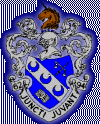

|
|
|
|||||||
The History of Theta Xi
Kappa Sigma Kappa's FoundingOn April 9, 1865, General Robert E. Lee surrendered the Army of North Virginia at Appomatox. The great Civil War had ended and leaders on both sides turned their thoughts and efforts toward reconstruction. Lexington, Verginia became the educational center of the new South. Gereral Lee accepted the presidency of the bankrupt and looted Washington College (later renamed Washington and Lee University) in August of 1865. Lee's presense attracted the finest educators to Lexington. As a result, the Virginia Military Institute (VMI) was reopened on October 17, 1865. In this environment, three fine fraternities were founded. Alpha Tau Omega was founded in Richmond, Virginia on September 11, 1865 and placed its mother chapter at VMI when it reopened. Sigma Nu was founded January 1, 1869. On the evening of September 28, 1867, cadet John M. Tutwiler invited cadets James Gunnel Hurst, Kenneth McDonald and David Gamble Murrell to his room in the VMI Quadrangle to found a fraternity. The original name, "C.E.C. Fraternity," was soon changed to Kappa Sigma Kappa, but the letters "CEC" did retain ritual significance within the fraternity (these letters can be found inscribed on the back of all Kappa Sigma Kappa badges.) The Fraternity was built upon the principles of mutual confidence, trust, and fraternal cooperation. It was Tutwiler who suggested the name, devised the ritual and designed the badge. The badge of Kappa Sigma Kappa was a gold jerusalem Cross. The Greek letters of the Fraternity appeared in gold on a black enameled disc in the center of the badge. Twelve oriental pearls surrounded this disc on the jeweled badge. Seven gold dots appeared on each of the four white enameled arms of the cross. Each part of the badge represented certain mystical concepts revealed in the ritual. The second chapter was established at Washington College, and other chapters were subsequently chartered at Virginia Agricultural and Mechanical College (now Virginia Polytechnic Institute and State University), the University of Virginia, Emory and Henry, Randolph-Macon, and other Southern schools. In the late 1880's, however, antifraternity laws which were passed in the South forced some of the chapters of Kappa Sigma Kappa into inactivity. Other chapters, with the execption of one at the University of Virginia, merged with Phi Delta Theta Fraternity. Alumni from the Virginia chapter, which had refused to enter the merger, preserved the records of Kappa Sigma Kappa. The fraternity remained inactive for more than forty years. In 1935 four students at the University of Virginia learned about Kappa Sigma Kappa and conceived the idea of reactivating the fraternity. The group, led by St. Paul Henstridge, investigated the history of the old Virginia chapter and found that a complete membership roll could be reconstructed from historical files in the University library. They learned that three members of the chapter were living, including two charter members. They discovered Founder Kenneth McDonald was still alive and well. The four students contacted these alumni and informed them of their intentions to revive the Kappa Sigma Kappa. The alumni officially granted the four students permission, and in September, 1935, the rebirth of Kappa Sigma Kappa began. The person most responsible for the reestablishment of Kappa Sigma Kappa nationally was George R. Jefferson, who became the fraternity's chief executive in 1937. During his term, which lasted until the merger agreement with Theta Xi Fraterrnity in 1962, he oversaw the expansion of Kappa Sigma Kappa. Under his leadership the fraternity roll grew from two chapters to a height of 45 in 1950. Beginning in the early 1950's, however, the fraternity began to rapidly lose chapters for reasons which ultimately led to the merger with Theta Xi. The Merger...Theta Xi Home Page... |
||||||||
|
1317 W. Fredonia Peoria, IL 61606 (309)676-5456 E-mail: thetaxi@lydia.bradley.edu |
||||||||
|
|
|
©1999 Alpha Sigma Chapter of Theta Xi Fraternity
Webmaster: John Kiolbasa, AS802 - E-mail:kiolbasa@bradley.edu